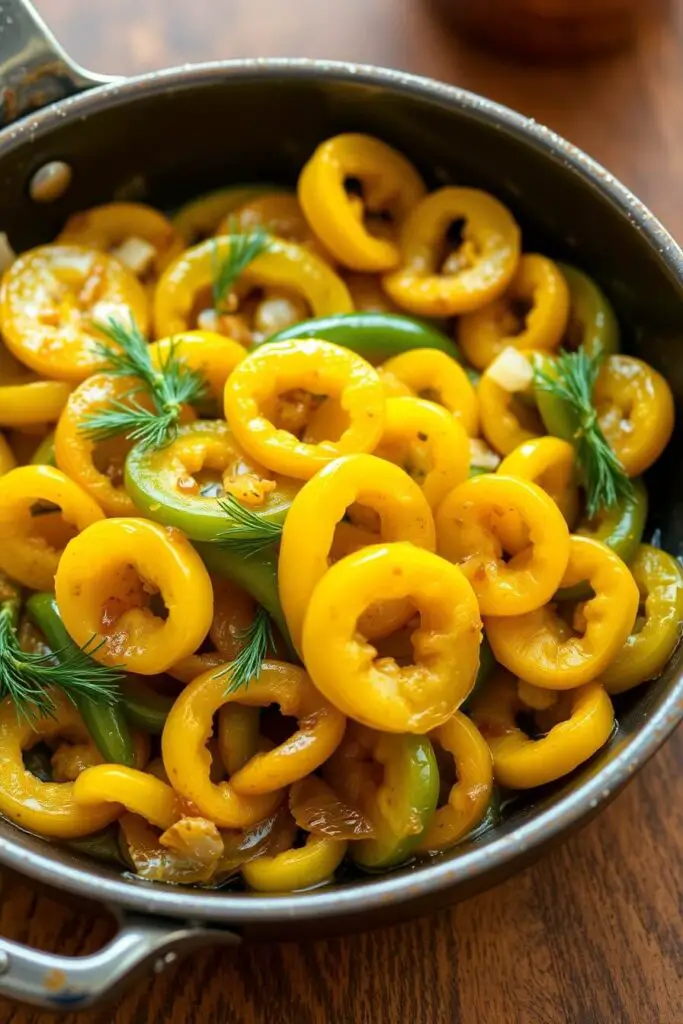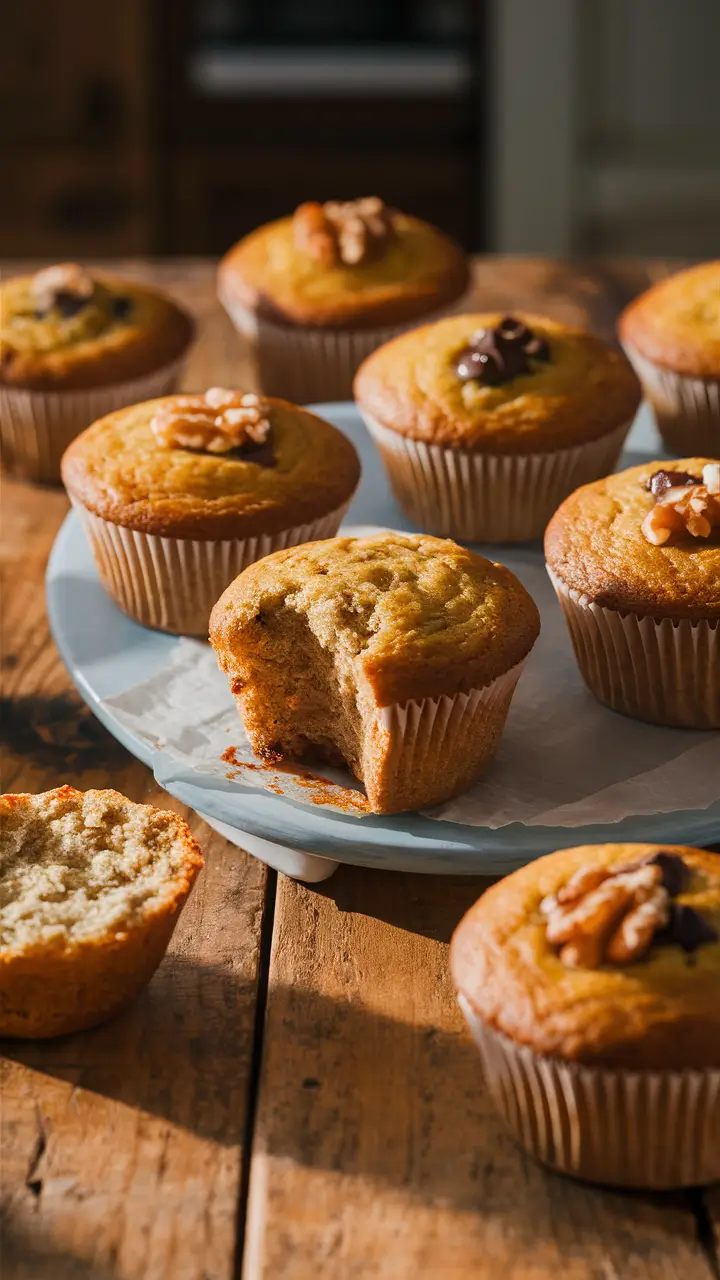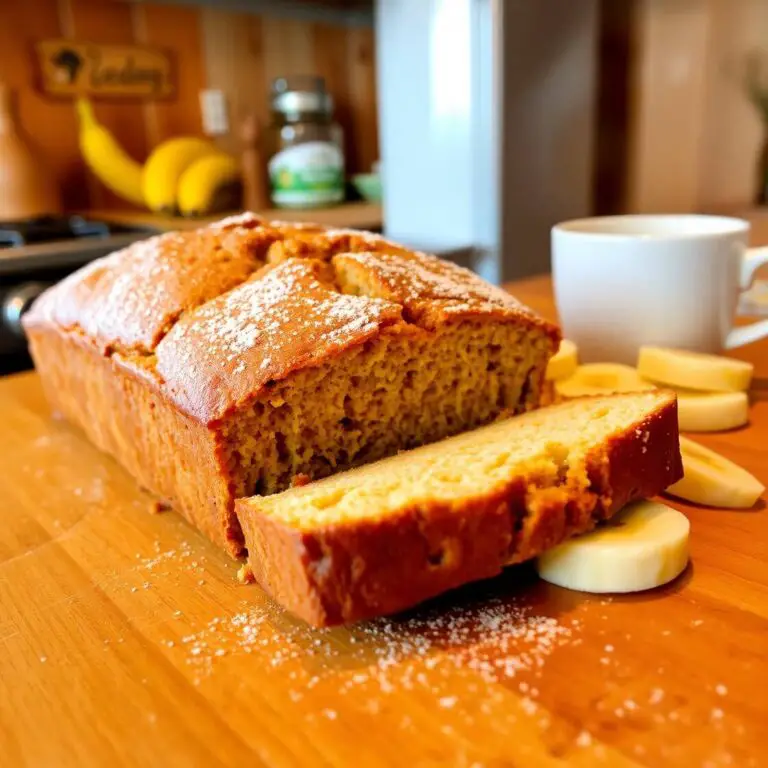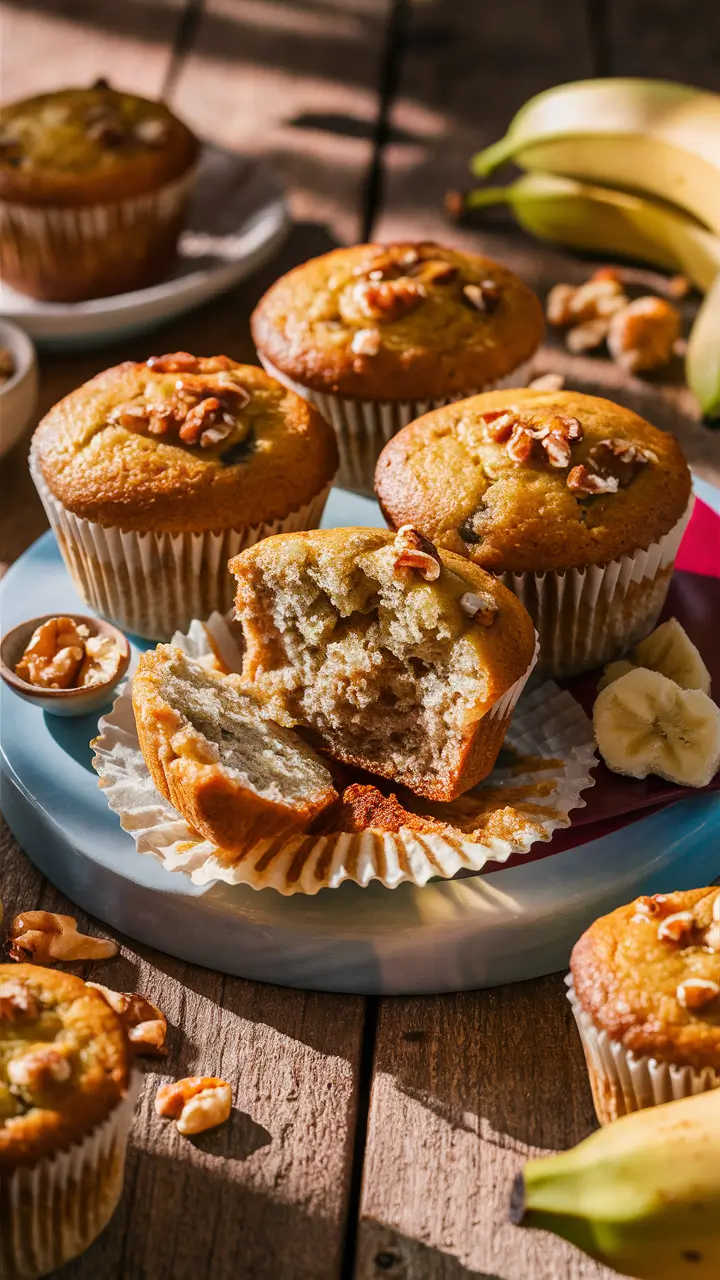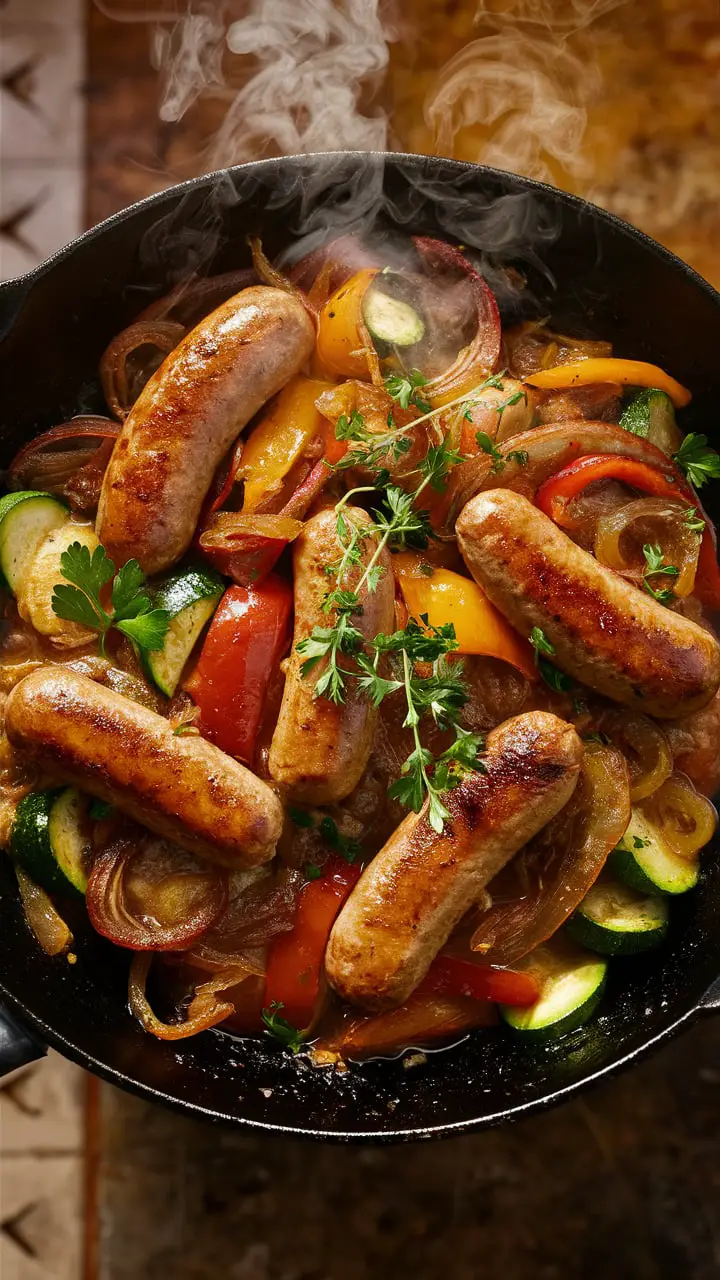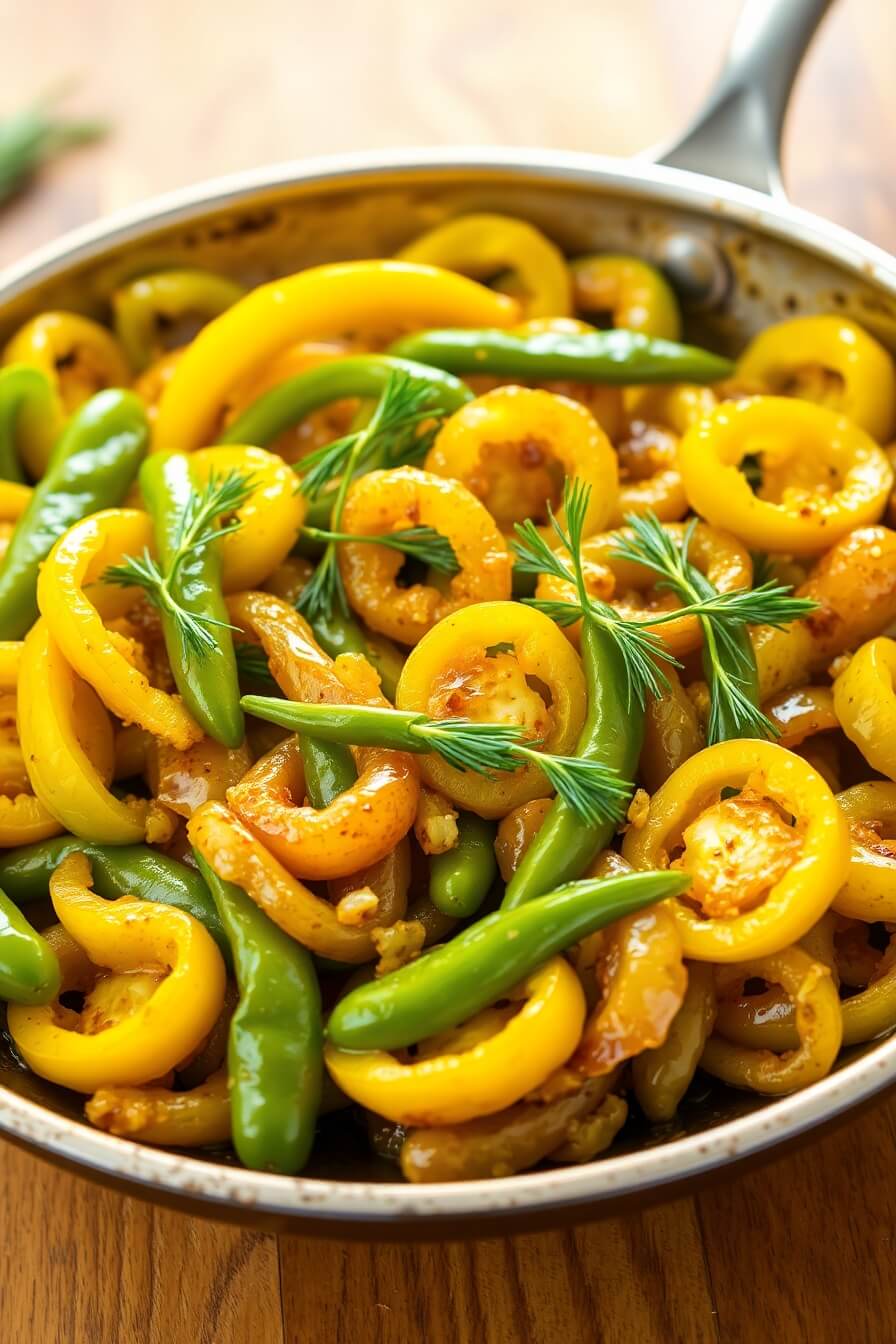
Spicy, tangy, and bursting with flavor—banana peppers are one of those underrated ingredients that deserve the spotlight. This banana pepper recipe was born out of a simple need: something bold and exciting to serve with grilled meats and pasta, but still easy enough to whip up on a weekday.
While many dishes use banana peppers as a garnish, this recipe turns them into the main event. Whether you’re a heat-seeker or just someone who loves punchy, tangy flavors, this recipe is designed to surprise and satisfy.
The best part? You don’t need to be a professional chef to master it. Keep reading and learn how these vibrant peppers can steal the show at your dinner table.
Why I Love This Recipe
Banana peppers often sit quietly in the corner of a sandwich or salad, but here, they shine front and center. What makes this recipe so special is its versatility and balance. It’s tangy without being too sour, has heat without overwhelming spice, and adds texture to any dish.
People love this banana pepper recipe because it checks all the right boxes—it’s easy to prepare, stores well, and adds a zing to almost anything. From pizza toppings to burger fillings or a side for barbecue nights, this recipe becomes a kitchen staple fast.
It’s also incredibly adaptable. You can keep it mild for kids or add extra chili flakes to turn up the heat. The briney base and slow-roasting process lock in the flavor while softening the peppers to just the right texture. And once you taste it, you’ll start looking for new ways to use it.
Ingredients for Banana Pepper Recipe
Let’s be honest—there’s something oddly satisfying about prepping colorful ingredients that smell amazing right out of the bag.
For this banana pepper recipe, you’ll need simple pantry staples and a few fresh ingredients. The combination creates a vibrant, flavorful pepper dish that’s both tangy and savory, with just the right amount of spice.
Fresh Ingredients:
- Fresh banana peppers (8–10 medium, sliced into rings)
- Garlic cloves (4, thinly sliced)
- White onion (1 small, thinly sliced)
- Fresh dill (a few sprigs, optional but recommended)
Pantry Essentials:
- Apple cider vinegar (1 cup)
- Water (1 cup)
- Granulated sugar (2 tbsp)
- Kosher salt (1 tbsp)
- Crushed red pepper flakes (½ tsp, optional for heat)
- Black peppercorns (1 tsp)
- Mustard seeds (1 tsp)
- Olive oil (2 tbsp, for sautéing)
This list might look simple—but it’s how the ingredients come together that truly transforms the flavor. The balance of vinegar and sugar creates a deliciously tangy brine, while sautéing the garlic and onion in olive oil before combining them with the peppers adds depth and a warm finish.
How Much Time Will You Need?
This recipe is quick and efficient, perfect for busy home cooks. Here’s a time breakdown:
- Prep time: 10–15 minutes
- Cook time: 20–25 minutes
- Cooling time (if storing): 30 minutes
- Total time: 1 hour (includes optional marinating for best flavor)
Even if you’re rushing through a weeknight dinner, you can get this recipe from stovetop to table in less than an hour.
How to Make This Banana Pepper Recipe
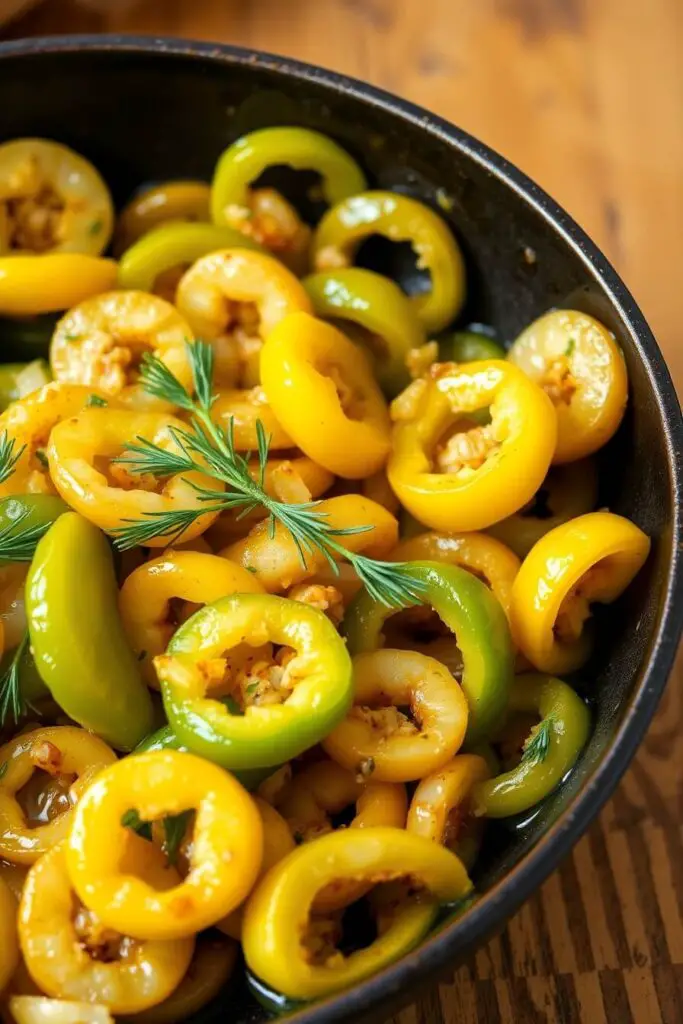
Here’s your step-by-step guide to creating a banana pepper recipe that’s flavorful, tender, and absolutely unforgettable.
Step 1: Prepare the peppers
Wash the banana peppers thoroughly and pat them dry. Slice into ¼-inch rings. Discard the stems and remove some of the seeds if you prefer less heat.
Step 2: Sauté aromatics
In a large skillet over medium heat, add olive oil. Once hot, sauté garlic slices and onion until soft and lightly golden—about 4 minutes. This step infuses the oil and softens the flavors.
Step 3: Add banana peppers
Add the sliced banana peppers to the skillet. Toss them gently with the aromatics and let cook for about 5 minutes, stirring occasionally.
Step 4: Make the brine
In a separate saucepan, combine apple cider vinegar, water, sugar, salt, mustard seeds, red pepper flakes, and black peppercorns. Bring to a gentle simmer and stir until sugar and salt dissolve completely—about 3–4 minutes.
Step 5: Combine peppers with brine
Pour the hot brine over the sautéed peppers in the skillet. Stir to combine everything thoroughly. Simmer the mixture for another 10 minutes to allow the peppers to absorb the flavors.
Step 6: Optional – Add dill and cool
If using fresh dill, add a few sprigs into the mix as it simmers. Once done, remove from heat and let the peppers cool in the pan for 30 minutes. This cooling stage allows the flavors to deepen.
Step 7: Store or serve
Transfer to a jar or airtight container if storing, or serve immediately as a side dish or topping.
Substitutions
This recipe is already flexible, but here’s how you can make it your own.
- Vinegar: Swap apple cider vinegar with white vinegar or rice vinegar for a slightly different tang.
- Sweetener: Honey or maple syrup can be used instead of sugar for a more complex flavor.
- Oil: Avocado oil or grapeseed oil can be used in place of olive oil, especially if you prefer a neutral base.
- Peppers: If you don’t have banana peppers, try Hungarian wax peppers (for more heat) or mild pepperoncini.
- Herbs: Not a fan of dill? Use fresh thyme or basil for a different twist.
Making small swaps lets you cater to your family’s preferences while still keeping the spirit of the dish intact.
Best Side Dish of Banana Pepper Recipe
To elevate your meal experience, pair this banana pepper recipe with one (or more) of these delicious side dishes:
- Grilled Chicken Thighs: The smoky flavor complements the tangy peppers perfectly.
- Creamy Mac and Cheese: A rich, cheesy base is beautifully balanced by the vinegar bite of the banana peppers.
- Crusty Garlic Bread: Scoop the peppers on top of thick, warm bread for an easy appetizer or snack.
Each of these sides turns your banana pepper creation into a complete and satisfying meal.
Serving and Presentation Tips
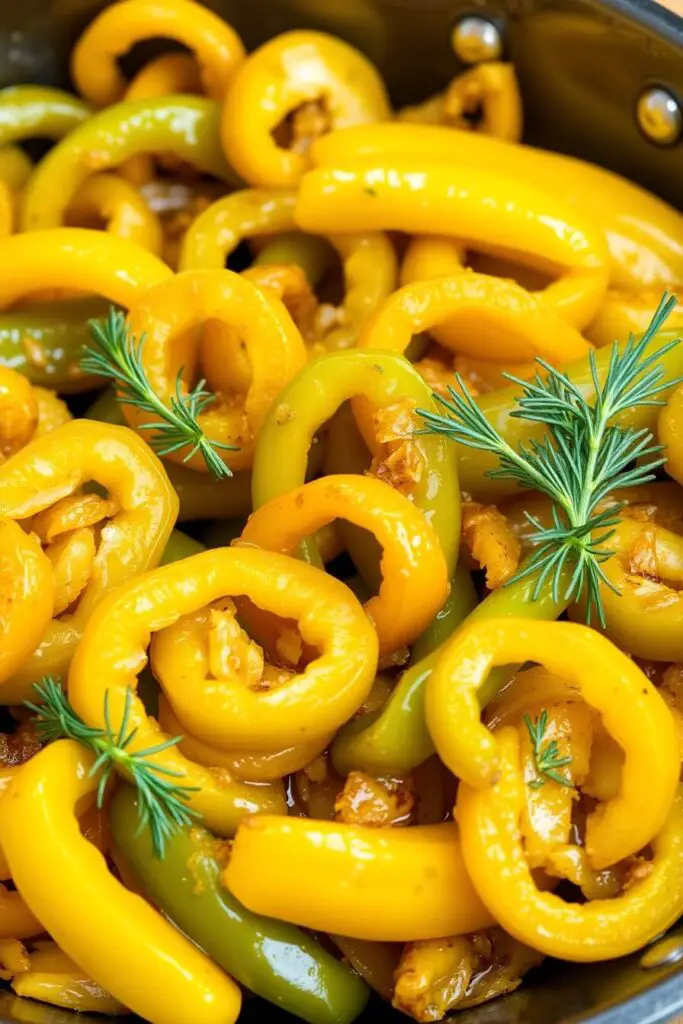
Serving banana peppers in a way that looks as vibrant as they taste can truly elevate the dining experience. When you plate this recipe, think about color contrast and texture.
A simple way to serve is in a small rustic bowl or jar, letting the bright yellow and green hues pop against neutral or wooden serving trays. Garnish with a few fresh dill sprigs or a light drizzle of olive oil to add a glossy finish.
If you’re using the peppers as a topping—say, on sandwiches or burgers—arrange them evenly and avoid overcrowding. This keeps the dish visually appealing and ensures every bite gets the perfect balance of flavor.
For parties or casual gatherings, serve banana peppers alongside an assortment of cheeses, olives, and cured meats for an inviting antipasto platter. The tangy, slightly spicy peppers will contrast beautifully with creamy cheeses and salty meats, making your presentation both stunning and delicious.
Tips and Tricks to Make This Recipe Even Better
The secret to a standout banana pepper recipe lies in these little extra touches:
- Marinate overnight: Letting the peppers soak in their brine overnight intensifies the flavors and softens the texture beautifully.
- Use fresh ingredients: Always opt for fresh banana peppers and fresh garlic. This ensures your dish has a crisp, bright flavor.
- Adjust sweetness: Taste the brine before combining and tweak the sugar level to balance the vinegar’s acidity perfectly.
- Layer flavors: Sautéing the garlic and onion before adding the peppers adds a caramelized depth that’s easy to miss but hard to forget.
- Add texture contrast: For a crunchier bite, sprinkle toasted sesame seeds or crushed walnuts just before serving.
- Heat level: Control the spice by removing seeds from the banana peppers or add a pinch of cayenne for an extra kick.
- Use quality vinegar: A good quality apple cider vinegar makes all the difference—avoid cheap substitutes that can be overly harsh.
Following these tips will ensure your banana peppers are not only flavorful but also a dish your friends and family will ask you to make again.
Common Mistakes to Avoid
Even the simplest recipes can falter if these common pitfalls aren’t avoided:
- Skipping the sauté step: Adding raw garlic and onions directly to the brine can result in harsh, overpowering flavors.
- Overcooking peppers: Too long in the heat can turn your banana peppers mushy and bland instead of tender and flavorful.
- Not balancing sweet and sour: The brine should have a harmonious balance—too much vinegar and it will be too sharp, too much sugar and it becomes cloying.
- Ignoring storage instructions: Improper storage can cause your peppers to spoil or lose their vibrant flavor quickly.
- Using old or dried-out peppers: Freshness is key. Old banana peppers won’t give the bright color or crisp texture needed.
Avoiding these mistakes guarantees your dish turns out delicious every time.
How to Store It
Proper storage not only extends shelf life but enhances the flavor over time. Here’s how:
- Once cooked and cooled, transfer the banana peppers and their brine to a clean, airtight glass jar or container.
- Store in the refrigerator for up to 2 weeks. The flavors will deepen as it sits, making it even tastier after a day or two.
- If you want to keep it longer, consider freezing the peppers (without the brine) in an airtight container for up to 3 months. Thaw in the fridge before using.
- Always use clean utensils to scoop peppers from the jar to prevent contamination.
- If you notice any off smell, discoloration, or mold, discard immediately.
With these storage tips, you can prepare your banana peppers in advance and enjoy them anytime.
Frequently Asked Questions
Can I use other types of peppers?
Absolutely! While banana peppers are ideal for their mild heat and sweet flavor, you can substitute with pepperoncini, Hungarian wax peppers, or even mild jalapeños depending on your heat tolerance.
Are banana peppers spicy?
They have a mild heat, usually ranging from 0 to 500 Scoville Heat Units (SHU), which is gentle enough for most palates but still adds a nice kick.
Is this recipe gluten-free?
Yes, all ingredients used are naturally gluten-free, making it safe for gluten-sensitive or celiac diets.
Can I make this recipe vegan?
Definitely! This recipe is naturally vegan, using only plant-based ingredients and oils.
How long do banana peppers last once prepared?
Stored properly in the fridge, they last about two weeks. The flavor often improves after the first 24 hours.

Banana Pepper Recipe
- Total Time: 1 hour (includes cooling/marinating)
- Yield: Serves 4-6 1x
- Diet: Vegan
Description
This banana pepper recipe transforms simple, mild peppers into a flavorful, tangy delight perfect as a side, topping, or snack. Combining sautéed garlic and onions with a tangy apple cider vinegar brine, this dish bursts with balanced acidity, subtle sweetness, and a hint of spice. Ideal for those seeking an easy, versatile recipe that adds excitement to sandwiches, salads, or grilled meals. It’s quick to make, stores well, and can be customized for mild or spicy tastes. Fresh, vibrant, and delicious—banana peppers are about to become your new kitchen staple.
Ingredients
- 8–10 fresh banana peppers, sliced into rings
- 4 garlic cloves, thinly sliced
- 1 small white onion, thinly sliced
- 1 cup apple cider vinegar
- 1 cup water
- 2 tbsp granulated sugar
- 1 tbsp kosher salt
- ½ tsp crushed red pepper flakes (optional)
- 1 tsp black peppercorns
- 1 tsp mustard seeds
- 2 tbsp olive oil
- Fresh dill sprigs (optional)
Instructions
-
Wash and slice banana peppers into rings, removing seeds if desired.
-
Heat olive oil in a skillet over medium heat, sauté garlic and onion until soft and golden (about 4 minutes).
-
Add banana peppers, cook for 5 minutes, stirring occasionally.
-
In a saucepan, combine vinegar, water, sugar, salt, peppercorns, mustard seeds, and red pepper flakes; bring to a simmer and dissolve sugar and salt.
-
Pour hot brine over peppers in the skillet, stir well, and simmer for 10 minutes.
-
Add dill if using, remove from heat, and let cool for 30 minutes before serving or storing.
Notes
- Marinate overnight for deeper flavor.
- Adjust sugar and vinegar to taste for perfect balance.
- Remove seeds for less heat or add cayenne for spicier peppers.
- Prep Time: 15 minutes
- Cook Time: 25 minutes
- Category: Side dish / Condiment
- Method: Sauté and simmer
- Cuisine: American / Fusion
Nutrition
- Serving Size: 1
- Calories: 45

